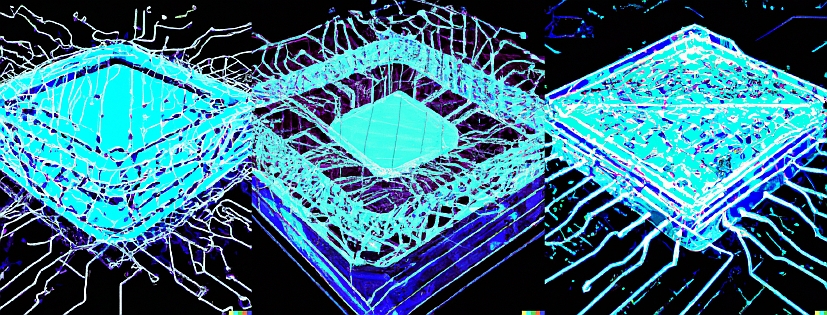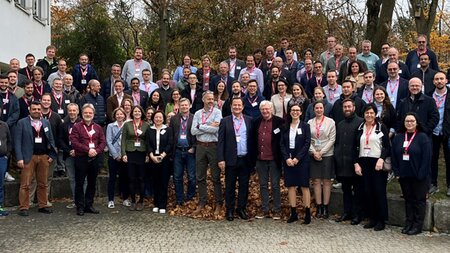
KI in Design
Künstliche Intelligenz in Design
Inhaltverzeichnis
1 KI in der Produktentwicklung2 Das Prädiktor-Evaluator-Netzwerk
3 Veröffentlichungen
4 Online Tool
5 Vorhaben/Projekte
1 KI in der Produktentwicklung
In den Ingenieurwissenschaften ist eine traditionell durch Menschen erledigte Aufgabe die des Designs bzw. der Synthese. Sind die Merkmale eines Systems definiert und muss sein Verhalten bestimmt werden, so haben wir es mit einer Analyseaufgabe zu tun. Wir der umgekehrte Prozess beabsichtigt (Ermittlung der Merkmale, wie bsp. Dimensionen und Werkstoffe, eines Systems auf der Basis des gewünschten Verhaltens) so entsteht eine Syntheseaufgabe. Analyseaufgaben sind in der Regel gut auf der Basis explizit programmierter Algorithmen lösbar (z.B. die Analyse der Verformung eines Bauteils auf der Basis der Finite-Elemente-Methode). Design- bzw. Syntheseaufgaben erfordern prinzipiell die Analyse und Bewertung einer enormen Vielfalt an möglichen Lösungen, die nie (weder vom Menschen noch maschinell) ausschöpfend erfolgen kann. Bisher wurden Designaufgaben durch den Menschen dadurch erledigt, dass unter dem Einsatz von Erfahrung, Intuition sowie subjektiven Betrachtungen (wie beispielsweise die Wahl eines bestimmten Stils) die Vielfalt der zur analysieren und zu bewertenden Lösungen stark reduziert wird.
Bei der Formalisierung von Designaufgaben wird die Suche in der Vielfalt möglicher Lösungen mittels geeigneter Parametrisierung in die Durchsuchung hyperdimensionaler Räume überführt. Bisher wurde hauptsächlich versucht, Designaufgaben dadurch zu automatisieren, dass sie in Optimierungsaufgaben umgewandelt wurden. So werden von der Vielfalt denkbarer Lösungen nur diejenigen analysiert und bewertet, die sich entlang eines eindimensionalen Suchpfads befinden, was von der Problemformulierung abhängt (Wahl der Zielfunktion und der Restriktionen der Optimierung) sowie von der Wahl des Suchalgorithmus. Diese Art der Fokussierung auf eine stark reduzierte Untermenge der möglichen Lösungen unterscheidet sich wesentlich von der Art der Fokussierung, die im menschlichen Designprozessen stattfindet. Durch die Verwendung von KI-Methoden kann in der Designautomatisierung an die menschliche Designmethodik angeschlossen werden, die als bewährt gilt.
Die Designaufgabe ist allerdings (etwa verglichen mit der Aufgabe der Bilderkennung) von großer Komplexität und Vielfalt, so dass nicht erwartet werden kann, dass sie komplett auf Maschinen wird übertragen werden können. Es ist eher davon auszugehen, dass die Künstliche Intelligenz in Wechselwirkung mit Menschen agiert. Das ist womöglich der beste Zusammenhang, in dem die Idee eines solchen „Mensch-Maschine-Teaming“ entwickelt werden kann.
Es ist auf der einen Seite nicht sinnvoll, dass klassisches Engineering basierend auf Intuition, Kreativität, subjektiven Betrachtungen und menschlicher Erfahrung komplett aufgegeben wird; auf der anderen Seite ist seine vollständige algorithmische Umschreibung zumindest in absehbarer Zeit nicht darstellbar. So ist es vielversprechend auf eine Synergie zwischen Mensch und KI zu setzen, in der selbstverständlich auch klassische, rechnergestützte Methoden integriert werden können.
Eine erste Maßnahme bei der Entwicklung eines solches Teaming besteht darin, solche klassischen, explizit programmierten Methoden in KI-Architekturen umzuwandeln. So werden sie besser in die Lage versetzt, mit Menschen oder mit KI-Modulen zu Abbildung menschlicher Fähigkeiten in synergetischer Wechselwirkung zu arbeiten. Im Gegensatz zum klassischen Vorgehen des überwachten maschinellen Lernens werden die Datensätze, die zum Training benötigt werden, nicht extern produziert werden, sondern entstehen gezielt (etwa durch zufällige Generierung) im Rahmen des Trainingsprozesses. Eine erste erfolgreiche Methode, die in diesem Zusammenhang am Institut entstand, ist die PEN-Methode zur Strukturoptimierung.
2 Das Prädiktor-Evaluator-Netzwerk
3 Veröffentlichungen
4 Online Tool





